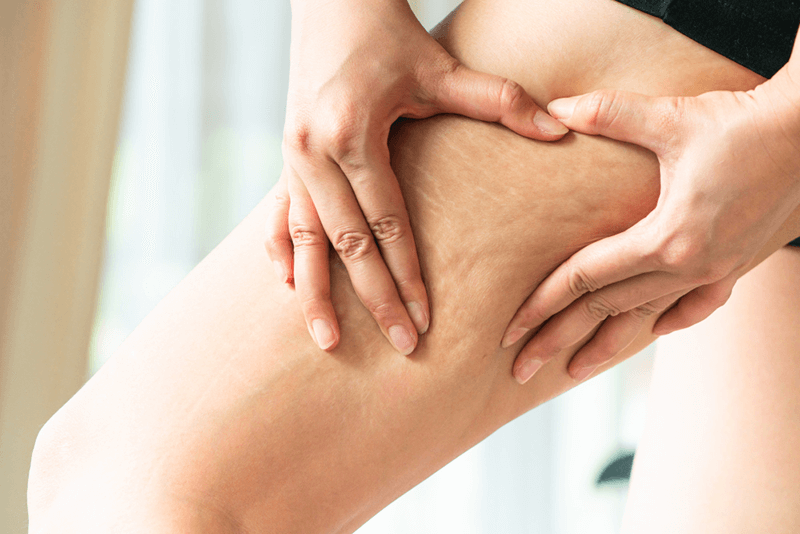Cellulitis is a common, non-contagious bacterial skin infection, usually caused by the streptococcus and staphylococcus germs that enter the deep layers of skin through a wound or sore. It occurs when bacteria attack broken or normal skin and start to spread under the skin and into the soft tissues beneath the skin. The affected skin appears swollen and red and is typically painful and warm to the touch. Although this infection can show up anywhere on the skin, it usually affects the skin in the lower legs. However, it can also occur in the face, arms, neck and other areas. If left untreated, the infection can rapidly spread to your lymph nodes and into the bloodstream causing permanent damage to lymph nodes, blood infections or other life-threatening complications. When caught early, physicians can start treatment with oral or intravenous antibiotics, pain relievers and good wound care before causing further complications. Dermatology medical billing and coding can be complex. Physicians should correctly document the procedures performed in the medical records. Medical coding outsourcing is a feasible option worth considering as this can help physicians ensure accurate and timely claim filing and reimbursement.
Cellulitis is a very common bacterial skin infection and any one can suffer from this infection. Reports suggest that about 14.5 million people are diagnosed with this condition in the United States each year. Generally, streptococcus (strep) and staphylococcus (staph) are responsible for most cases of cellulitis. MRSA (methicillin-resistant Staph aureus) and other bacteria’s can also cause cellulitis. Some of the other causes of this condition include – injuries that tear the skin, infections (after surgery), foreign objects in the skin, bone infections underneath the skin and other long-term skin conditions such as eczema or psoriasis.
What Are the Common Symptoms of Cellulitis?
As mentioned above, cellulitis can appear on almost any part of the body. However, it usually appears on damaged skin like inflamed wounds, dirty cuts and areas with poor blood circulation. The common signs and symptoms include –
- Pain and tenderness in the affected area
- Redness or inflammation of your skin
- Skin sore or rash that appears and grows quickly
- Leaking of yellow, clear fluid or pus
- Fever
- A tight, glossy, swollen appearance of the skin
- A feeling of warmth in the affected area
Symptoms of a more serious cellulitis infection include –
- Warm skin
- Sweating
- Shaking
- Muscle aches
- Lightheadedness
- Fatigue and dizziness
- Chills
- A feeling of illness
Symptoms which signal that cellulitis is spreading –
- Drowsiness
- Red streaks
- Lethargy
- Blistering
Diagnosis and Treatment
As an initial part of diagnosis, dermatologists will check the area wherein the skin sore or rash appears. They will perform a detailed physical examination to determine – swelling of skin, extent of swell or increase, redness and warmth of the affected area and swollen glands. Based on the severity of your symptoms, your physician will carefully monitor the affected area for a few more days to see if redness or swelling spreads. In some cases, a blood draw or a culture of the wound will be done to test the presence of bacteria.
Treatment for this bacterial skin infection begins with a dose of oral antibiotics for about 10 to 21-days. The length of treatment with oral antibiotics will depend on the severity of infection. In most cases, the symptoms of infection will improve or reduce within a few days of the intake of antibiotics. Even if the symptoms happen to improve within a few days, it’s important to complete the full course of medications prescribed to ensure proper treatment. In some cases, physicians may prescribe pain relievers as well.
Generally, cellulitis symptoms disappear within 7-10 days of starting antibiotics. On the other hand, longer treatment would be necessary if your infection is severe. It is important inform your physician if your symptoms does not improve within 3 days after beginning the course of antibiotics and if your symptoms get worse or if you develop fever.
For appropriate reimbursement, providers should ensure that the diagnostic codes on insurance billing claims for cellulitis infection accurately reflect their specific diagnosis. Dermatologists who treat cellulitis disease rely on reputable medical billing companies to code the condition accurately. The following ICD-10 codes are relevant with regard to this bacterial skin infection –
L03 – Cellulitis and acute lymphangitis
L03.0 – Cellulitis and acute lymphangitis of finger and toe
L03.01 – Cellulitis of finger
- L03.011 – Cellulitis of right finger
- L03.012 – Cellulitis of left finger
- L03.019 – Cellulitis of unspecified finger
L03.03 – Cellulitis of toe
- L03.031 – Cellulitis of right toe
- L03.032 – Cellulitis of left toe
- L03.039 – Cellulitis of unspecified toe
L03.1 – Cellulitis and acute lymphangitis of other parts of limb
L03.11 – Cellulitis of other parts of limb
- L03.111 – Cellulitis of right axilla
- L03.112 – Cellulitis of left axilla
- L03.113 – Cellulitis of right upper limb
- L03.114 – Cellulitis of left upper limb
- L03.115 – Cellulitis of right lower limb
- L03.116 – Cellulitis of left lower limb
- L03.119 – Cellulitis of unspecified part of limb
L03.2 – Cellulitis and acute lymphangitis of face and neck
L03.21 – Cellulitis and acute lymphangitis of face
- L03.211 – Cellulitis of face
L03.22 – Cellulitis and acute lymphangitis of neck
- L03.221 – Cellulitis of neck
L03.3 – Cellulitis and acute lymphangitis of trunk
L03.31 – Cellulitis of trunk
- L03.311 – Cellulitis of abdominal wall
- L03.312 – Cellulitis of back [any part except buttock]
- L03.313 – Cellulitis of chest wall
- L03.314 – Cellulitis of groin
- L03.315 – Cellulitis of perineum
- L03.316 – Cellulitis of umbilicus
- L03.317 – Cellulitis of buttock
- L03.319 – Cellulitis of buttock, unspecified
L03.8 – Cellulitis and acute lymphangitis of other sites
L03.81 – Cellulitis of other sites
- L03.811 – Cellulitis of head [any part, except face]
- L03.818 – Cellulitis of other sites
L03.9 – Cellulitis and acute lymphangitis, unspecified
- L03.90 – Cellulitis, unspecified
With correct and timely treatment, many of the symptoms of Cellulitis disease can be largely controlled. Although some cases of cellulitis are not preventable, there are many steps people can take to reduce their chances of developing this infection which include – taking good care of the skin, protecting the skin from scratches and infections, treating cuts and grazes, covering the wound with a bandage and keeping the skin moist to prevent cracking and other skin infections.
Partnering with a reliable medical billing and coding outsourcing company can ensure accurate reporting of dermatology procedures. Such companies have experienced AAPC-certified coders who are knowledgeable in the coding and billing guidelines for this specialty and can ensure accurate medical claims.




